HOW WILL CEP BE BUILT?
THIS IS HOW WE THINK CEP WOULD BE BUILT.
By Walshaw Turbines Research Group
We can use existing wind farms and the planning statements of experienced developers to understand the CEP proposal.
There are two access options: A, via Halifax and B, via Colne. Walshaw Turbines Research Group (WTRG) survey work shows that the route via Colne ends on ground with a high chance of a catastrophic peat slide, so we shall use Option A and start with the compound which would be built on Cock Hill Swamp at the A6033 summit, opposite ‘the elephant’.
The Compound
Onsite construction would begin with a fenced compound on Cock Hill Swamp measuring 250 metres by 250 metres. Peat and vegetation would be removed down to boulder clay, the site levelled, and a geotextile laid which is then covered with crushed rock imported from beyond Yorkshire. This compound would first receive the deliveries of stone to build the tracks which would be delivered by convoys of tippers and distributed across the site on earthmovers. There would be a site office and toilets. An attenuation pond (bottom left in photo) would be dug downhill of the site to control polluted water and silt.
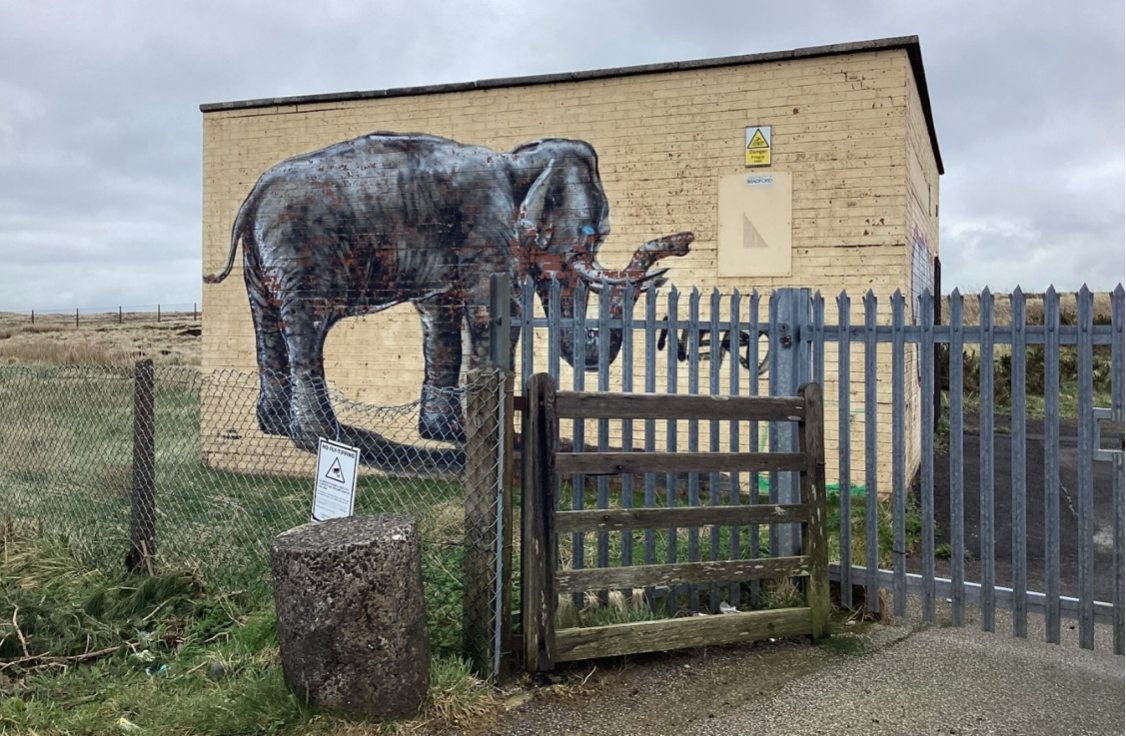
The elephant on the A6033 opposite the CEP compond | Photo by WTRG
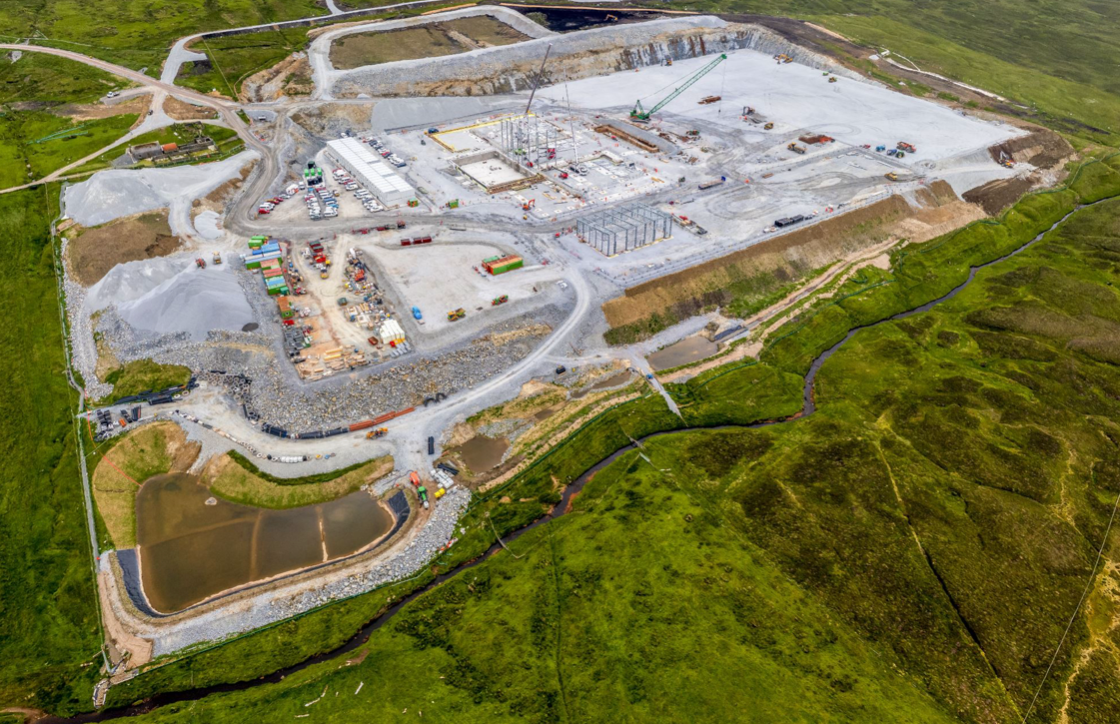
Main compound of Viking WF on Shetland | Photo by SSE
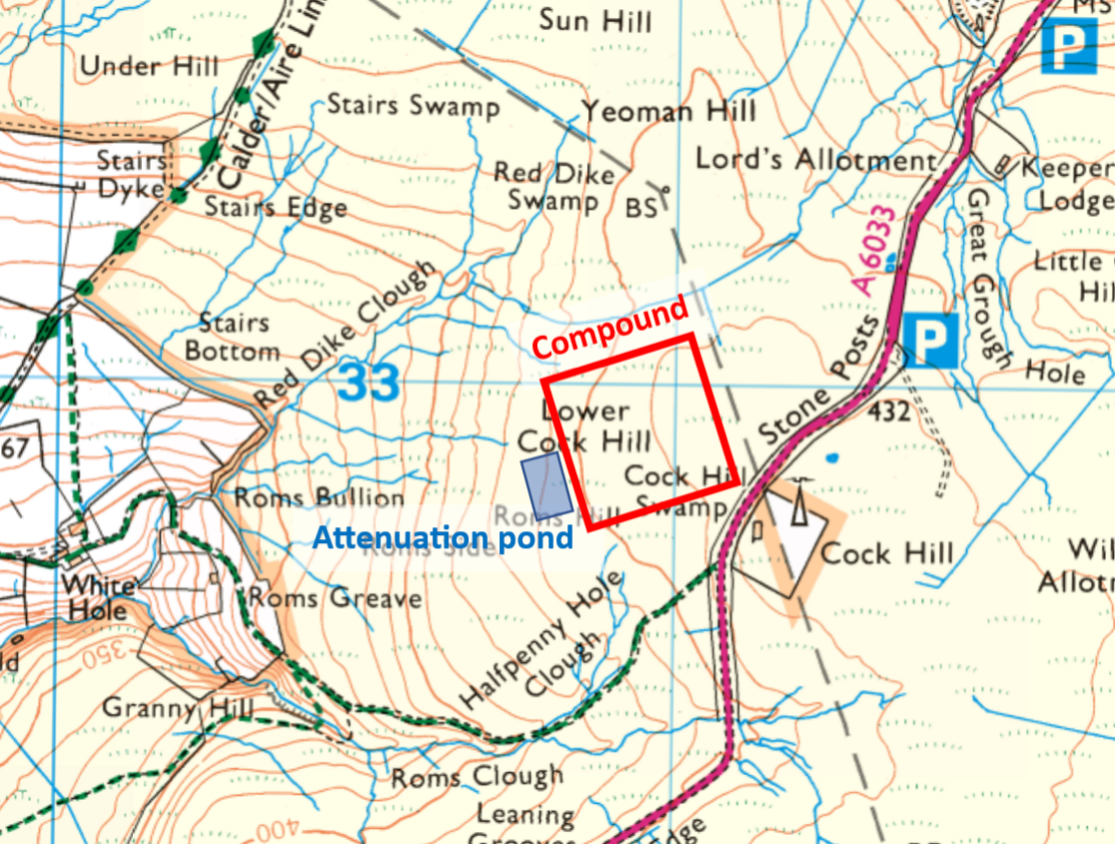
Cock Hill compound and pond for CEP | Map by WTRG
Aggregate
In 2023, Calderdale Wind Farm Ltd believed that on-site quarries might supply the crushed rock (aggregate) for construction. It was pointed out that gritstone aggregate is too weak and porous to make roadstone or concrete and can only supply bulk fill. This is known to be a problem throughout West Yorkshire and the five district councils publish an annual aggregate assessment. CWF Ltd now accept that all technical aggregates will have to be imported from beyond West Yorkshire. North Yorkshire limestone cannot be used on tracks as it will poison the blanket bog. The Walshaw Moor Estate, that presently owns the CEP site and runs it as a grouse moor, is required to use ‘inert rock’ for their infrastructure and it complies by using blue granite.
About 1200 20-tonne lorry loads of a hard stone like granite would be needed to surface the compound. The excavated peat and vegetation would be retained in a spoil heap to cover the compound when CEP construction was completed. Such a covering would be cosmetic at best because replaced peat on top of the free-draining compound would dry out and oxidise to CO2.
Tracks
The next phase is to build the internal tracks. Where peat is no more than 1.5 metres deep, a trench would be cut down to the boulder clay. A geotextile is laid to stabilise the surface and bulk fill is tipped in and compacted. A second layer of geotextile stabilises the bulk fill and the top 40 cm of the track is made of granite aggregate. Drainage ditches would be dug on both sides of the track.

Cross-section of a CEP cut track on peat less than 1.5 metres | Diagram: WTRG
Where the peat is deeper than 1.5 metres, and provided the slope allows, a floating track would be constructed. A geotextile is laid down and aggregate piled on top. The peat is mostly water, and the granite sinks until its weight comes into equilibrium.

Cross-section of a CEP floating track on peat more than 1.5 metres | Diagram: WTRG
If the track traverses a slope on peat or crosses the contours at a shallow angle, then the weight is being taken by downhill peat, and a peat slide becomes likely. Here’s a film of a small peat slide at Viking Shetland.
The spine track
The map shows a watershed spine track with a width of 12 metres (see diagram below). Any wind farm layout on Walshaw Moor using Option A for access would be based on the spine track shown in black dashes. Option B would use the same spine in reverse, but notice how difficult the ground is before the spine is reached from the north apex of the site on Jackson’s Ridge.

The CEP spine track on watersheds | Map: WTRG
The spine track runs along the watersheds on the ridges and short spurs would run off the spine down to the turbines. The spine track would be 12 metres-wide, allowing two large vehicles to pass to reduce congestion. The spur tracks would be 6-metres wide. Wind farm spine tracks usually have an uphill maximum gradient of 10%.
If granite were used to surface the tracks it would probably be trucked in from a rail depot after a ship delivery from Glensanda on Loch Linnhe, the largest granite quarry in Europe.
The spine track would require 5000 lorry loads of granite and further loads of local bulk fill. The total amount of rock that would need to be imported would depend on the final size of the wind farm.
The steep descent of the spine track to a new bridge in Walshaw Dean does not have a precedent in existing wind farms.
Turbine foundations and crane hardstandings

Concrete batching plant | Photo by GB
A concrete batching plant would be set up on the Cock Hill compound. The aggregate for the concrete must be imported from outside West Yorkshire, but a Dales limestone aggregate would be suitable. All concrete is strongly alkaline, and the steel and cement foundation must be protected from the acid peat by a membrane. This would eventually fail and as the acid peat would react with the steel and concrete the blanket bog will be poisoned by iron sulphate, sold as moss killer in garden centres.
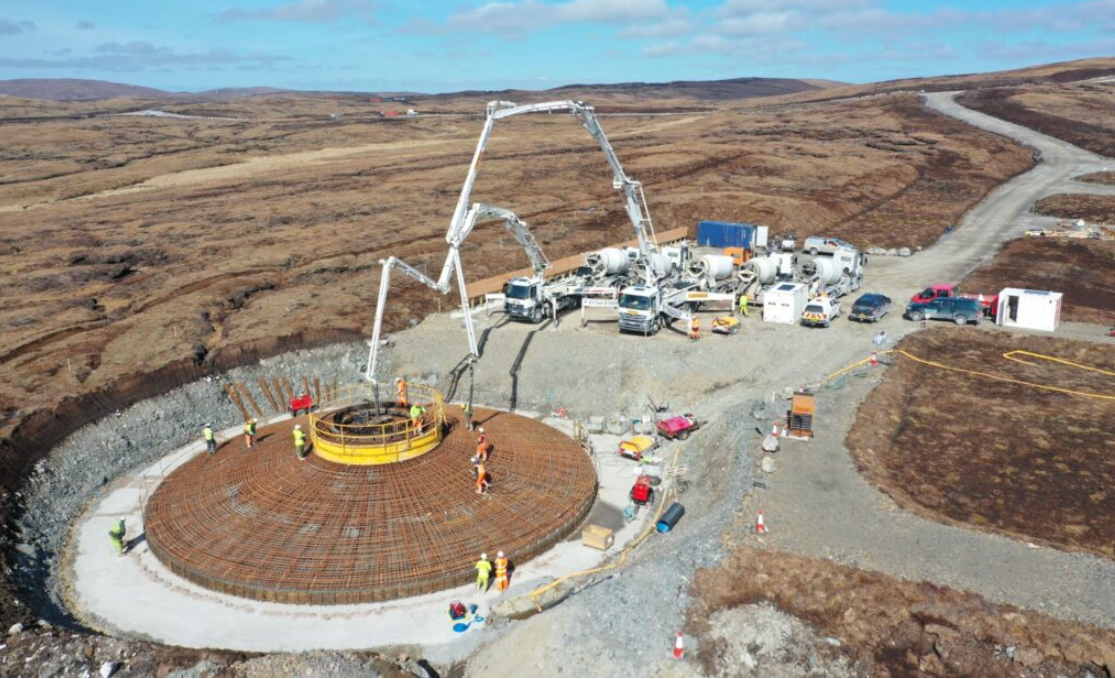
Concrete pour at Viking WF | Photo: SSE
The photo shows Viking WF whose 4.3 MW turbines required 680 m3 of concrete.
CEP turbines would be much bigger and would be 7.2 MW. The foundation for a single turbine of that size requires 850 m3 of concrete and 110 tonnes of steel rebar, and a diameter 7% bigger than the photo. The area under the concrete delivery lorries shown on the photo would become the crane hardstanding and would be permanent.
Turbine delivery
Collett & Sons of Halifax are world experts in turbine delivery. The blades are the most awkward items, while the nacelle, containing the generator and gears, is the heaviest. In a UK first, Collett delivered 80-metre blades to Cushaling WF in Ireland (July-August 2024; nine turbines in nine summer weeks; on Walshaw Moor this would be during the ground-nesting birds season when it is illegal to disturb these protected species.)
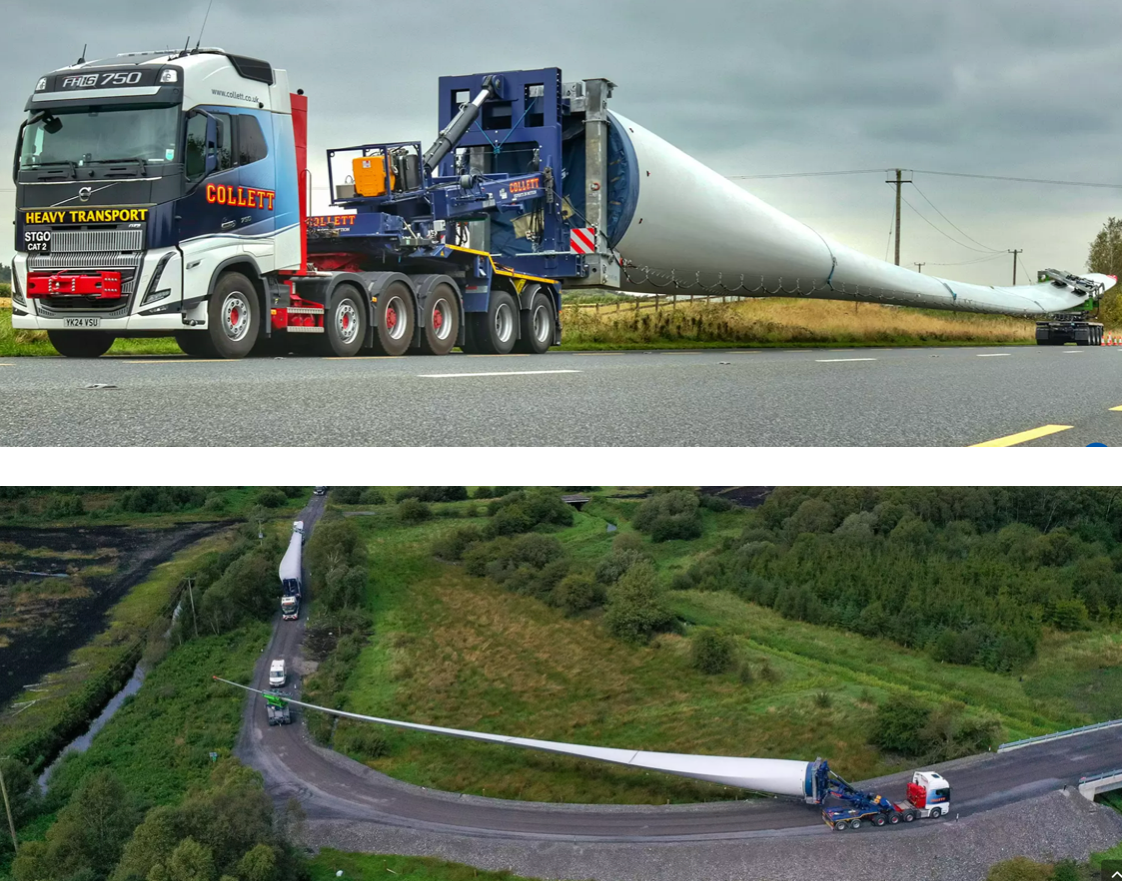
Collett of Halifax delivering 80 metre blades to Cushaling WF (55 MW)
A full description of Option A delivery route is given in another post. There are three pinch points that involve unusual civil engineering if the blades are delivered flat. One of these is the turn from Spring Hall Lane into Moor End Rd, Halifax, shown below. This turn requires either the unusual demolition of the car dealership on the apex, or the use of raised blade technology. Option B does not require raised blades, but has a high probability of a catastrophic peat slide.
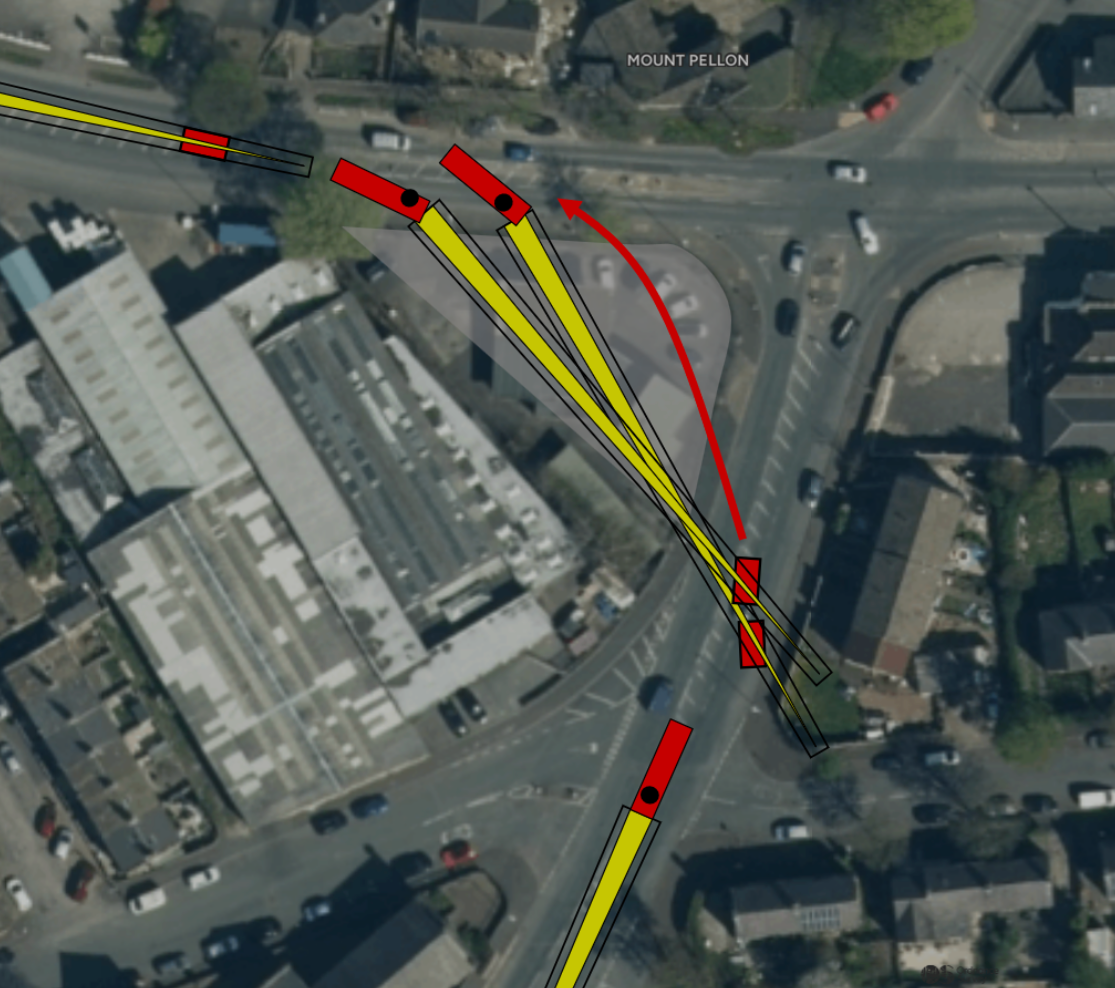
Spring Hall Lane/ Moor End Rd corner with demolished site | Diagram: WTRG

A 65-metre raised blade delivery through Hawick | Photo: BBC
Hawick saw the only raised blade delivery through a town in the UK. The blades were only 65 metres, there were only 11 turbines and disruption was intense.
Flat blades can move at night when traffic is light. Raised blades only move by day, at walking pace.
Connection and BESS
CEP is grossly overcrowded at 300 MW. A safe wind farm of much lower power could be connected to the Distribution Network Operator (DNO) Electricity Northwest substation at Rochdale (limit 240 MW) if that substation were to be upgraded. The DNO is distributes electricity in its locality, usually on poles at 275 kV or less. The National Grid can move electricity all over the country, usually on pylons at 400 kV. If sent to Rochdale, the electricity would be used in Lancashire.
The cable length to Rochdale is 30 km, and the 132 kV cable would be buried in a trench cut along existing roads, but the least disruptive route between Hebden Bridge and Rochdale would be along the Rochdale canal towpath. This long connection would be expensive, and the developers are likely to ask for the cable to be carried on timber poles if given consent for CEP. Planning permission for connections is always separate from the wind farm itself. At this point, it is possible for developers to alter the connection method from the expensive buried cable to the cheaper overhead poles.
All future wind farms would probably have an on-site battery energy storage system (BESS) to smooth the output over the half-hour settlement periods of the UK electricity trading system. The BESS cannot solve dunkelflaute (prolonged dull stillness in winter) but acts like the flywheel in a car engine to manage short-term variation in wind speed. For the 300MW wind farm proposed on Walshaw Moor, a 200MW BESS would be suitable. This would need 50 of the shipping container-sized Tesla megapacks costing a total of £38 million to buy. The BESS will be next to the substation and, according to a CEP engineer, both will be “low down and central”.
A substation can be built to look like a farmhouse, but a BESS will always look like a container park and should be screened from view. Since CWF Ltd originally planned a turbine inside the wood, they may intend the substation and BESS to go there, where it would be screened from the National Trust land at Hardcastle Crags, and from the adjacent Pennine Way. The wood is home to crossbills and its loss should be strongly opposed by Natural England.

CEP BESS and substation “low, central” and screened | Map: WTRG
The long-term safety of a BESS is not known but there have already been fires. The Fire Brigade is not yet a statutory consultee for the CEP proposal. Crews from Halifax and Keighley fire stations would use the onsite tracks from Cock Hill to reach a BESS fire, taking between forty minutes and an hour. Those from Mytholmroyd would take about thirty minutes using the narrow and twisting public road from Hebden Bridge to Widdop, past the Packhorse Inn, and access the site at Clough Foot.
When will it be built?
Construction of CEP could not begin until a connection to the local or national grid is in sight. At present, these connection dates are given as 30 October 2035 (to an as yet unbuilt National Grid substation ‘north of Leeds’ for up to 312 MW) and 30 October 2037 (to an upgraded Electricity Northwest DNO substation at Rochdale for up to 170 MW). These connection dates are in the NESO TEC register and relate to the previous CWF proposal. The CEP proposal is not yet in the register.
Walshaw Turbines Research Group

The image above envisions how the site will appear from Cock Hill on Oxenhope Moor.
How You Can Help
GETTING INVOLVED
Speak Out
Share your thoughts with your communities at home and online. Attend meetings.
Contact a member of the House of Lords.
Write to the Secretary of State for Energy Security and Net Zero, (currently Ed Miliband), Secretary.State@energysecurity.gov.uk and tell them that there is no need to build wind farms on protected peatland.
Stronger Together
You are welcome to join our campaign group and add your voice and vote to the many – The Calderdale Windfarm Action Group is the main Facebook group representing all of the eight campaign groups of Stronger Together to Stop Calderdale Windfarm.
We’d love to have you on board with us.
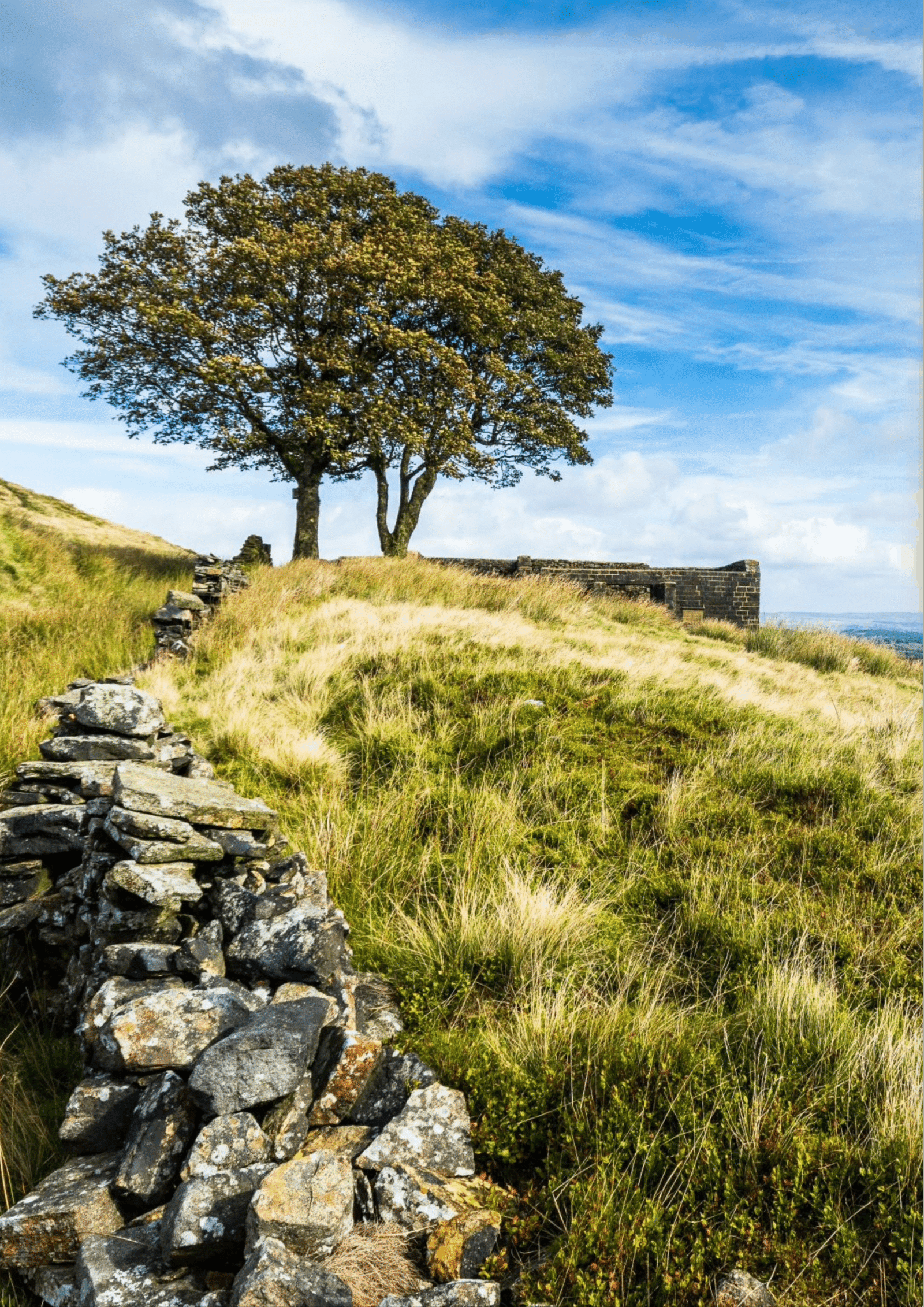
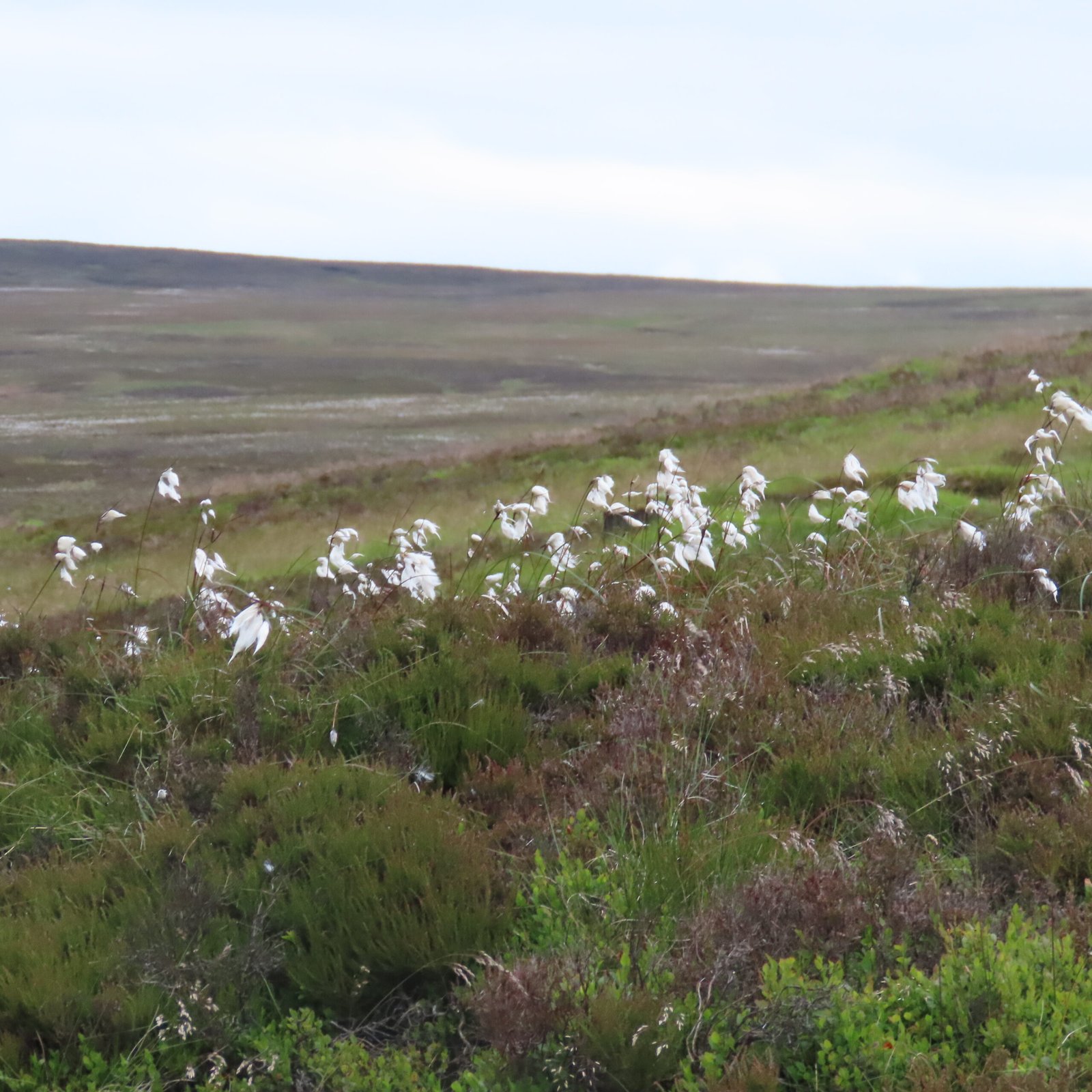

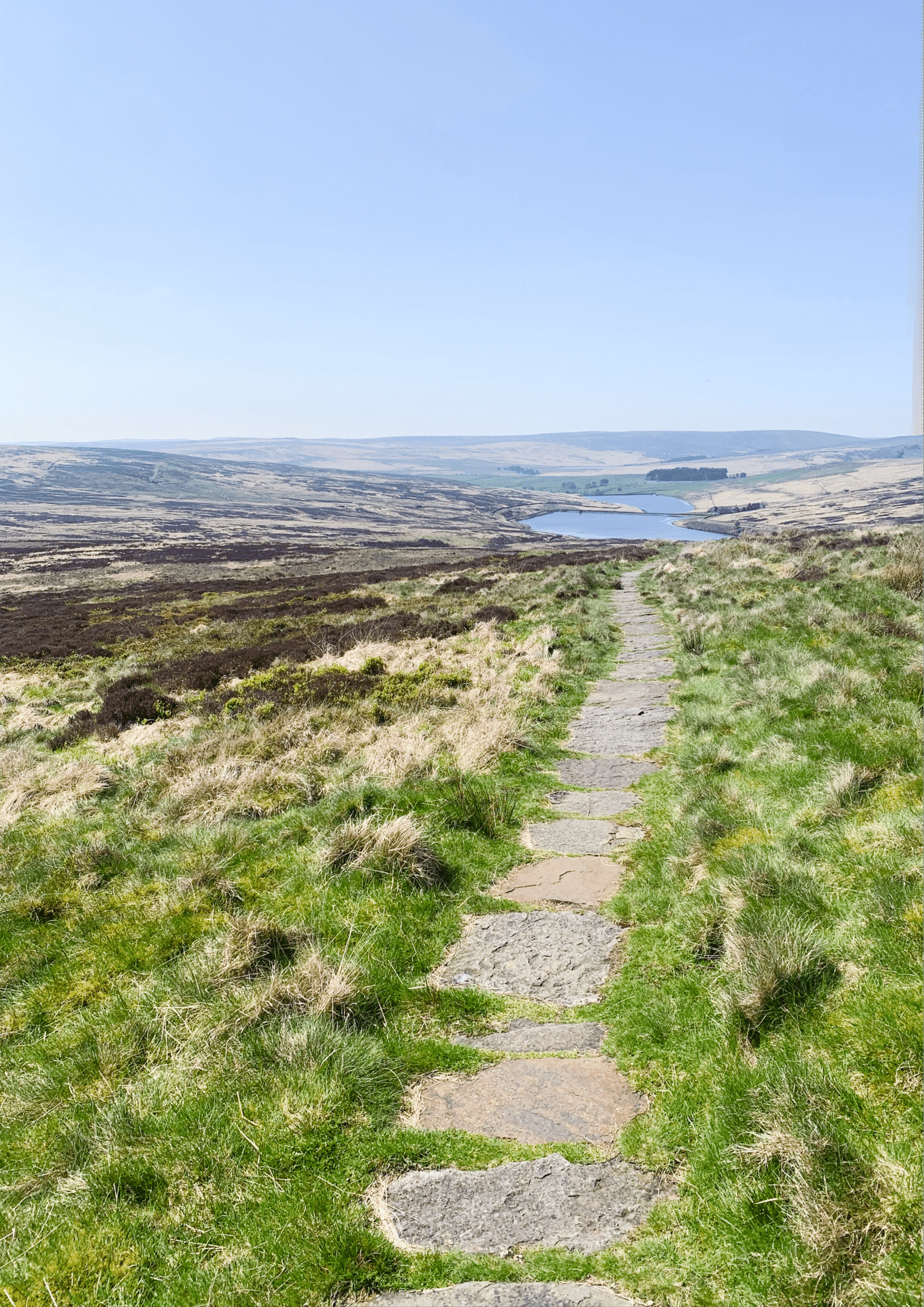
Media Enquiries
For interviews and press/media enquiries please contact:
Lydia MacKinnon - 07766 333114
Penny Price - 07771 737274





